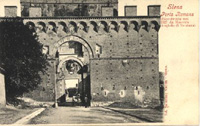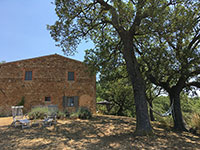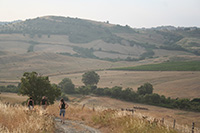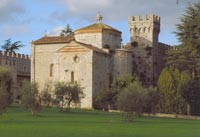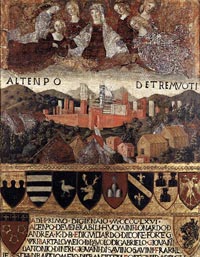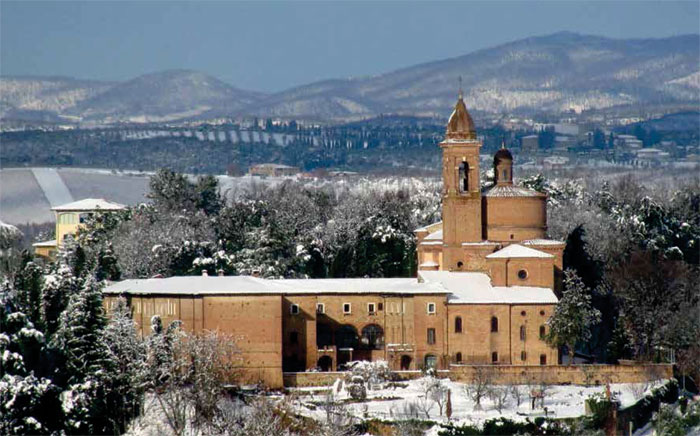 |
|
| I T | Siena, The Convent and Basilica dell'Osservanza |
Siena | The Convent and Basilica dell'Osservanza |
| The Basilica of St Bernardino all'Osservanza |
|||
| The Basilica dell'Osservanza, situated on the outskirts of Siena, was built around 1490. The church probably designed by Francesco di Giorgio. The church was expanded between 1495 and 1496 by Magnifico Despota Pandolfo Petrucci. Built in the Renaissance style, the original complex was damaged during the Siege of Siena in 1554. It was rebuilt during the Baroque period and restored between 1922 and 1932. During the Second World War it was almost totally destroyed by American bombing on January 23 1944, but in an ambitious post-war reconstruction project the original basilica was able to be rebuilt through photographs and evidence presented by the monks of the monastery. 'The church’s exterior is characterized by simple and well-balanced forms: the brick façade is preceded by a porch sheltered by a pitched roof, while the top part ends with a tympanum that contains, in its centre, the sun with the trigram used by Saint Bernardino; the bell tower is a replica made in the late-seventeenth century. The interior impresses with its refined elegance, in line with the Renaissance canons of orderliness, harmony, and proportion. The plant has a single nave, enriched by four chapels on each side, and the sanctuary , which is higher than that the nave, is covered by a dome. This simple frame, inspired by respect of Franciscan spirituality, houses some magnificent works of art from the Sienese and Florentine schools, all made between the fourteenth and sixteenth centuries. Some of the Basilica’s magnificent paintings are a testament to the devotion to St. Francis and his friars and, therefore, also of St Bernardino and the Observants’ dedication to the Blessed Virgin Mary, Mother of God. On view in the first chapel on the left there is the Madonna with Child and Angels, painted around 1455 by Sano di Pietro, a prolific artist from Siena with an extraordinary mastery in drawing and in the use of colours. '[1] The Museo Aurelio Castelli is adjacent to the church, in the former Sacristy, and contains a collection of religious art and furnishings all belonging to the church itself. |
|||
|
|||
Enlarge map |
|||
The Via Francigena From
Siena to Ponte d'Arbia |
|||
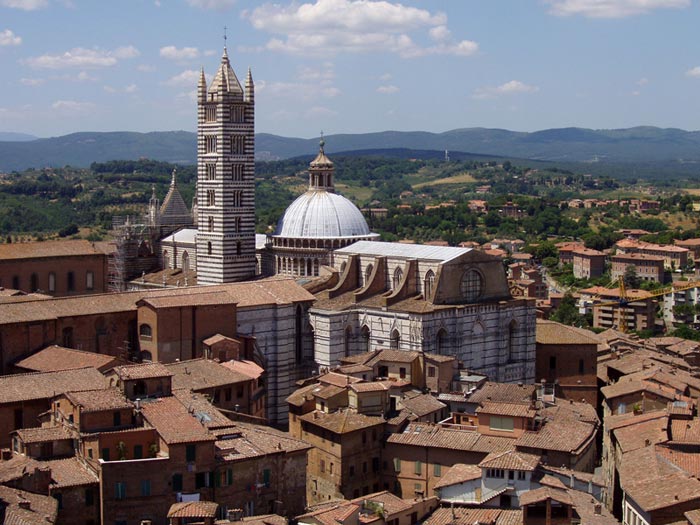 |
|||
Siena, Duomo |
|||
| La Via Francigena | From
Siena to Ponte d'Arbia - 28.5 km |
|||
Departure: Siena, Piazza del Campo Arrival: Ponte D'Arbia, Centro Cresti Length: 28.5 km ype of travel: On foot, by mountain bike Travel time on foot (h: min): 6.20 Getting to the starting point: Empoli-Siena-Grosseto and Siena-Chiusi railway lines, Siena or Monteroni d'Arbia station |
|||
Description |
|||
| The 28.5 km leg of the Via Francigena begins in Siena and takes less than 7 hours. A challenging course along the roads of the Val d'Arbia, with rolling landscapes and views on the skyline of the city of Siena, leading to the Grancia di Cuna, an ancient fortified farm that was owned by the Santa Maria della Scala hospice. The itinerary starts in the heart of the city: il Campo, the spectacular shell-shaped square where the famous Palio di Siena is held each year. You can admire the wonderful Palazzo Pubblico, whose interior is decorated with allegories by Lorenzetti and which houses the interesting Civic Museum in this square paved with the characteristic red bricks. You can also visit the huge Tower del Mangia in the square. The top is 120 meters from the ground, from where you have a wonderful view of the city. Continuing along the foothills of the Siena Crete, you pass Monteroni d'Arbia and reach Quinciano. A short distance away is the fortified town of Lucignano, with the Romanesque church of San Giovanni Battista. After a stretch along the railway line is the end of this leg in Ponte d'Arbia.[2] |
|||
View Tappa 12 in a larger dimension |
|||
|
The Via Francigena crosses the whole city and exits through Porta Romana to the south. |
|||
The Porta Romana, one of the old gates in the city walls of Siena, guarded the road leading to Rome. The gate was constructed in 1327. |
|||
|
|||
The Basilica of St Bernardino all'Osservanza | www.viaesiena.it La Francigena in provincia di Siena
|
|||
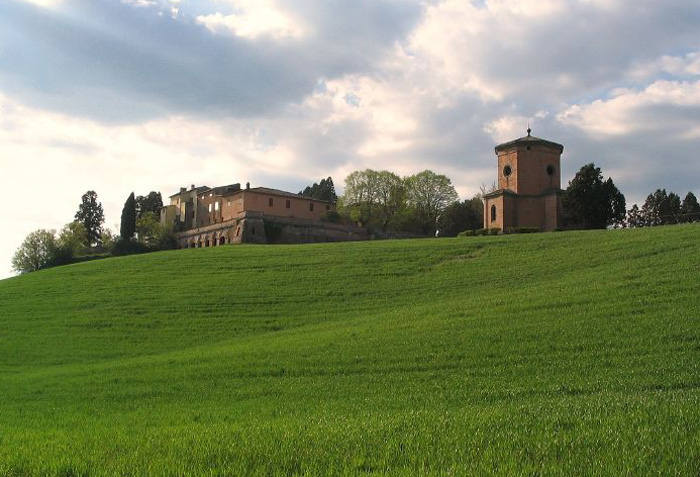 |
Quinciano, Monteroni d'Arbia |
|
||||
Podere Santa Pia, garden |
Podere Santa Pia |
Podere Santa Pia
|
||
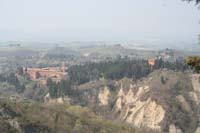 |
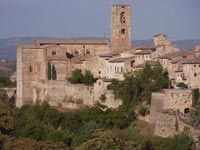 |
|||
Colline sotto Podere Santa Pia |
Abbazia di Monte Oliveto Maggiore |
Colle di Val d'Elsa |
||
Abbadia Monastero (Castelnuovo Berardenga) |
Pienza |
La Basillica dell'Osservanza, Siena |
||
| Francesco di Giorgio Martini |
||||
Francesco di Giorgio Martini (baptized 23 September 1439 – 1502) was an Italian painter of the Sienese School and a sculptor, as well as being, in Nikolaus Pevsner's terms, "one of the most interesting later Quattrocento architects'"[1] and a visionary architectural theorist; as a military engineer he executed architectural designs and sculptural projects and built almost seventy fortifications for the Federico da Montefeltro, Count (later Duke) of Urbino, for whom he was working in the 1460s, building city walls as at Iesi and early examples of star-shaped fortifications.
|
||||
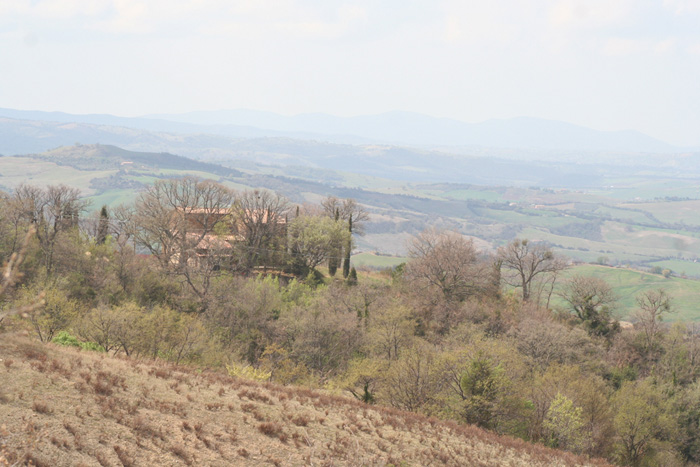 |
||||
Podere Santa Pia, with its wide panoramic terrace overlooking the Maremma (April) |
||||
This article incorporates material from the Wikipedia article Francesco di Giorgio published under the GNU Free Documentation License. |
||||

